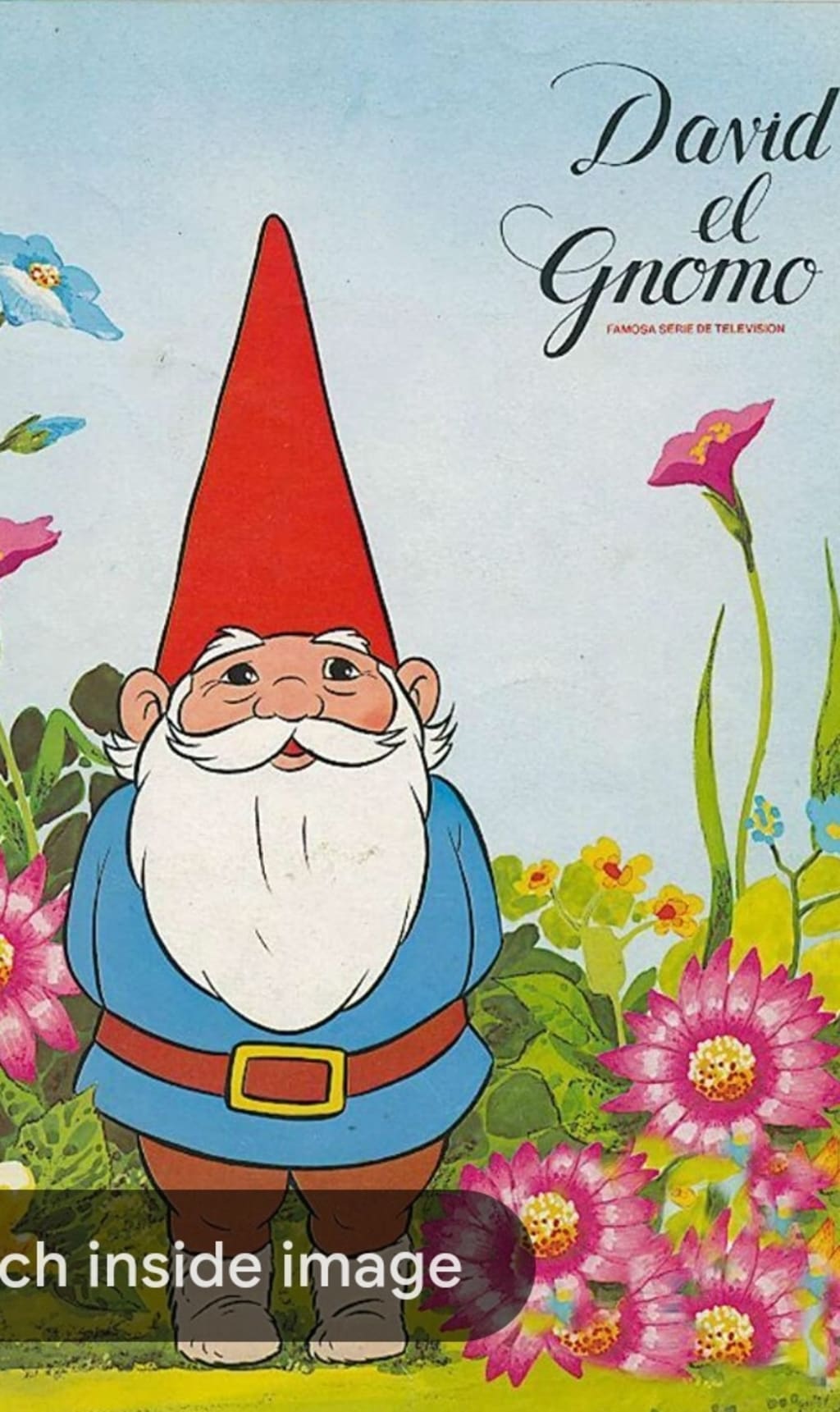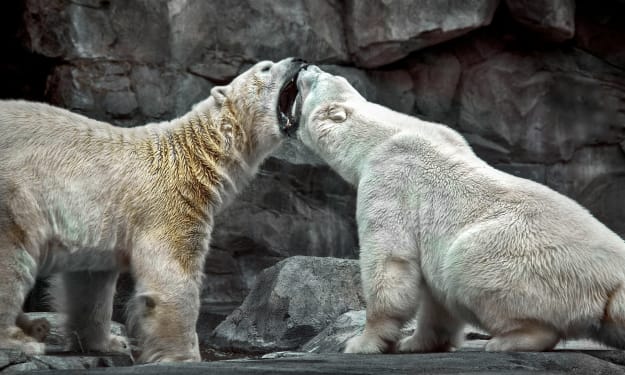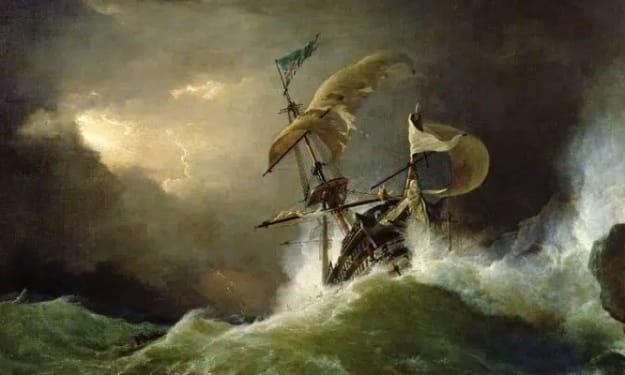David, the Gnome
Short thoughts about an Old beloved show

The simplest storybook shows can sometimes carry and deliver more serious messages. These messages, act as warnings to the viewer that are hidden behind adorable stories. Like many recorded fables from the past, 'David, the gnome' follows this formula. It is based on a main character from a 1985 Spanish T.V. series. The original T.V. series was based on a book called 'The Secret Book of Gnomes', by Wil Huygen. BRB International produced the spanish series. Although, 'David, the gnome's' Spanish origins tie into the shows underlying religious message historically speaking, that will not be coved in this paper. However, that could be a paper topic in and of itself. The garden gnome before this production found it's origins from hired, live-in druid hermits, then refined by Paracelsus and others.
It's the small things, that most people overlook, that depict another story or fable being told. A parallel story being shown along side the adorable- forest-gnome-hero storyline. This second story can be deciphered through symbolism, common tropes and subtleties found in each episode.
In David the Gnome episode 1, we are introduced to a gnome and his wife. It introduces a loveable Gnome couple. The episode makes a point of showing how the couple rubs noses as a way of showing affection. Later in the episode it shows a opposom couple rubbing noses in the same fashion. This is the first time the Gnomes are equated with an animal counterpart in a subtle way. Although, this idea would be revisited in many episodes. Equating humans to animals can have a negative connotation. It has carried the meaning of being less civilized or wild, in past References. Animals are generally considered lower than humans in the hierarchy of life's creatures. Although, there are texts depicting prized animals that were held at higher esteem. Sometimes these prized animals were held higher than certain classes of individuals. Generally speaking, prized animals were connected to an individual deemed high in the existing hierarchy, which granted them the status. In this episode, there is a cute gnome couple in love. However, they don't touch eachother or kiss, they rub noses to show affection. Maybe, this detail is just a cute anthropomorphism or maybe also a social commentary. These kisses are known as eskimo kisses. The kisses were so called because supposedly people living in the extreme colds couldn't kiss because their mouths might freeze. The implied implication being, it is a safer way to kiss and show love for those confined to a marriage, possibly with only the outward appearances of love. There may be a social commentary about spouses, marriage and the chance of adultery with a connection to medical care here.
The Gnomes are explained as living separate from human societies, on the outskirts. The Gnomes are smaller than normal humans, but much stronger. It seems these qualities are the only thing differentiating them from humans. A professional, such as a doctor or teacher, when embarrassed or ousted from society is made small, but must be much stronger to survive it. The individual must become smarter, to survive. The individual must use whatever talents they possess or are able to acquire to become a helpful member of the community; enough so, to form a new network. David is seen helping all the surrounding forest animals, which gains him rides and other useful things, as seen with his fox friend and the rabbit. At first glance its an adorable educational show, but I would argue it carries some social commentaries that are in contrast to its face value depictions. However, it's lessons are no more less important.
In episode 2, again David is shown having similarities to an animal, the fox. This time it is a heightened sense. If a person has been made lower in the hierarchy, the only way back up is through improved intelligence and abilities, or kindness. David, the Gnome, and his wife possess all of these qualities. Their separation from society appears to be a choice at the point the audience meets them. As David says at the end of the episodes, the Gnomes, always have a watchful eye on the humans. This episode, also displays some common stereotypes, such as ancestors as wise and fire creatures as bad. Both hinting towards it's biblical undertones and natural depictions. The 'terrible' depiction of fire beings may be referencing the animals point of view of fires, as well as the biblical depiction of hell-ish creatures.
Episode 3 introduces a little girl who has eaten a strawberry and the Gnomes claim she needs a shining begonia to fix her. This simple story again is much more complex than it at first appears. Strawberries have symbolic meaning dating back to biblical times. It is said strawberries relate to a positive experience, purity and innocence, or the zeal of god. They are sweet showing the positive side of things. Red is also the color of blood. Strawberries during medieval times represented sexual temptation. The girl in the episode, is sick because of a bad strawberry she ate in the woods. Possibly a deplorable act comitted, that under gods will made her sick. The second item, begonias, have many medicinal qualities. They are high in vitamins C and can help with hair and skin. This is important to those who become ill, possibly due to an immune response, from tasting a "bad strawberry". She could however, be saved by a flower that is gaurded by a snake. A snake also has biblical origins as the creature who got Eve kicked out of Eden. They also are slithery and often conniving. Possibly the bad strawberry, or snake, is also the one who guards the girls fate by being the keeper of her cure. The Gnomes, however, steal it for her and thus save her. The girl is given the shining flower cure at the end, making her well. A different take, with similarities that reminds one of Snow White and the Seven Dwarves. The show hints at the power that power foods can have, equating them to medicine. While also showing the dangers that a young girl may incounter. It is a cute fairy tale while also at it's heart or core a fable.
Episode four continues in this way. Once again comparing the gnomes to animals in given qualities. David, a medicine man and ancestor of the lands takes pride in his similarities to the animals. He Gives credit to the animals for parts of his knowledge. Often, subtley suggesting this knowledge was partially discovered through observation. The episode continues explaining the importance of the gnome hat, which resembles a Dunce cap. Dunce cap wearers were put in the corner with the cap for all to see the foolishness of the wearer. The cap also touts the color red, for the men. However, in this episode David is seen explaining how useful and important his hat is. He shows all the ways it helps him. The dunce cap was worn to cause the wearer to better themselves, be smarter, as to not be singled out negatively again. When David is explaining how useful his hat is in the cold, I can't help but wonder if a writer could have been making light of the situation of having to wear such a hat, possibly adding some satirical humor, while also referencing the druid hermits..
The symbolism of the gnome's and their gnome lifestyle as a mix between animal and human is the basis of the show. This basis relies on common tropes of good vs evil, along with damsel in distress, and crime and punishment to teach it's lessons. The subtleties tailor the lesson to the audience member whether young or old, educated or not. Each episode of the show offers something informative to the viewer. Either way the show is an entertaining watch that packs an impressive amount of detail into each episode.
Are the two messages being told through an adorable story a coincidence or a dual meaning? You decide. Either way, I find much of the information shown in the show, still holds up today and can be a fun way to learn about natural cures and nature. Most episode contain this dual perspective being depicted simultaneously, in my opinion. Maybe, because as beings that walk this earth we are always caught between the two poles literally and figuratively.





Comments
There are no comments for this story
Be the first to respond and start the conversation.